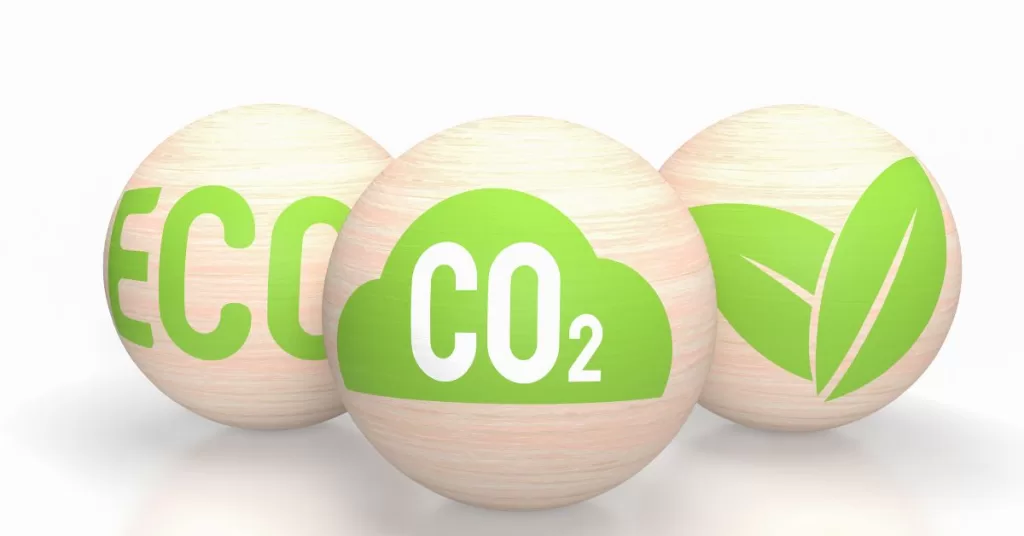CO2 is a gas that is naturally present in the air we breathe. It is also an essential element in photosynthesis. The biochemical process plants use to convert light energy into chemical energy.
When plants are exposed to light, CO2, and water, they produce oxygen and glucose, which is the sugar that fuels their growth which is why it’s essential to monitor CO2 Levels in Your Grow.
Cannabis plants require higher levels of CO2 than what is present in the air to achieve optimal growth. When the level of CO2 in the air is below 250 ppm (parts per million), the plant’s growth will be limited.
On the other hand, when the CO2 level is above 1500 ppm, the plant’s growth will be accelerated. Therefore, maintaining optimal CO2 levels in your grow room is crucial for the health and growth of your plants.
The science behind CO2 and plant growth
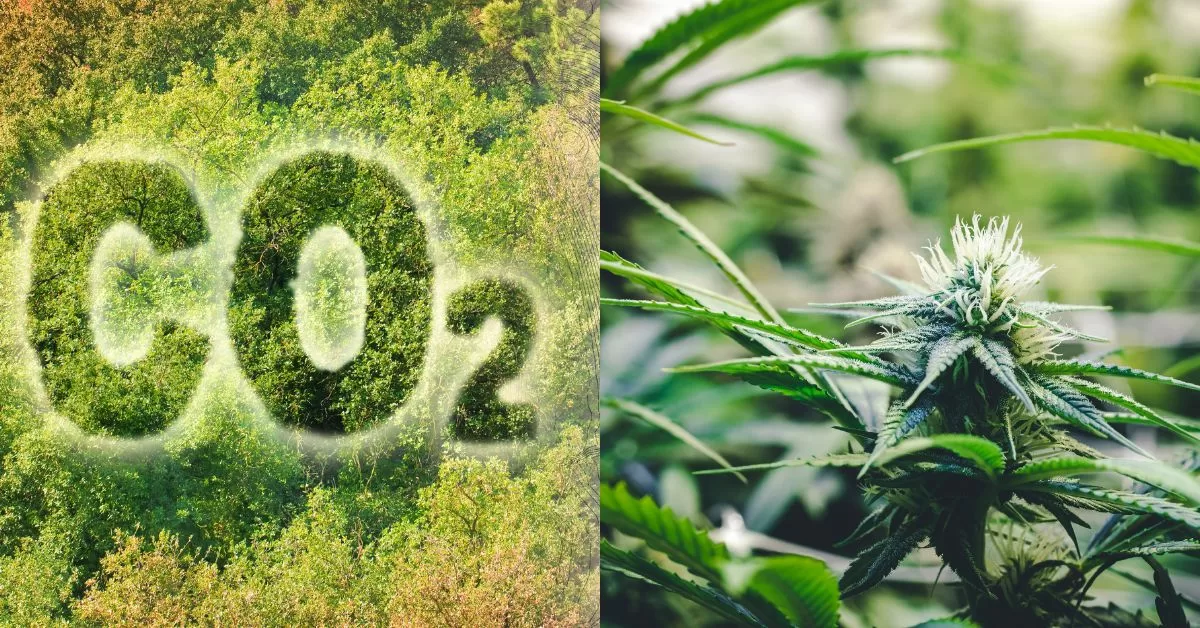
The process of photosynthesis involves two stages: the light-dependent reactions and the light-independent reactions.
In the light-dependent reactions, light energy is absorbed by chlorophyll, and this energy is used to produce ATP and NADPH, which are energy-rich molecules. These molecules are then used in light-independent reactions, where CO2 is converted into glucose.
The rate at which photosynthesis occurs is directly related to the amount of CO2 present. When CO2 levels are low, the plant’s ability to produce glucose is limited, which results in slower growth.
When CO2 levels are high, the plant’s ability to produce glucose increases, resulting in faster growth. However, it’s important to note that there is a point of diminishing returns, where too much CO2 can actually harm your plants.
Optimal CO2 levels in your grow for cannabis plants
The optimal CO2 levels in your growth for cannabis plants are between 1000 and 1500 ppm during the vegetative stage and between 1200 and 1500 ppm during the flowering stage.
These levels are higher than in the air, so it’s important to supplement CO2 in your grow room.
How to measure CO2 levels in your grow room
To measure the CO2 levels in your grow room, you will need a CO2 meter. Different types of CO2 meters are available on the market, including analog and digital meters. Digital meters are more accurate and easier to read but also more expensive.
When measuring CO2 levels, taking multiple readings throughout the day is important to get an accurate average. You should also take readings at different heights in the grow room, as CO2 levels can vary depending on the height.
Non-dispersive Infrared (NDIR) CO2 Meters
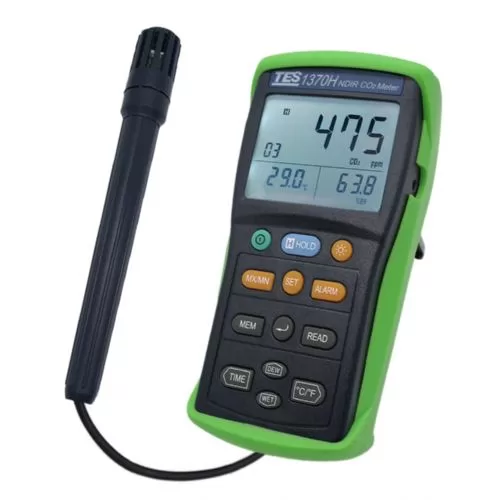
NDIR CO2 meters are widely used and provide accurate measurements of CO2 levels. They work by using infrared light to detect the concentration of CO2 in the air.
NDIR meters are typically compact, easy to use, and provide continuous monitoring of CO2 levels. They are suitable for both small-scale and large-scale cannabis grow rooms.
Photoacoustic (PAS) CO2 Meters
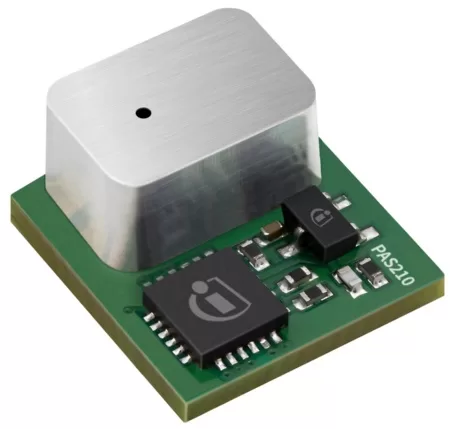
PAS CO2 meters operate by utilizing the principle of photoacoustic spectroscopy to measure CO2 concentration.
These meters emit light at specific wavelengths, and when CO2 molecules absorb this light, it creates sound waves that are detected by a sensitive microphone. PAS meters are known for their high accuracy and sensitivity, making them suitable for precise CO2 monitoring in cannabis grow rooms.
Colorimetric CO2 Meters
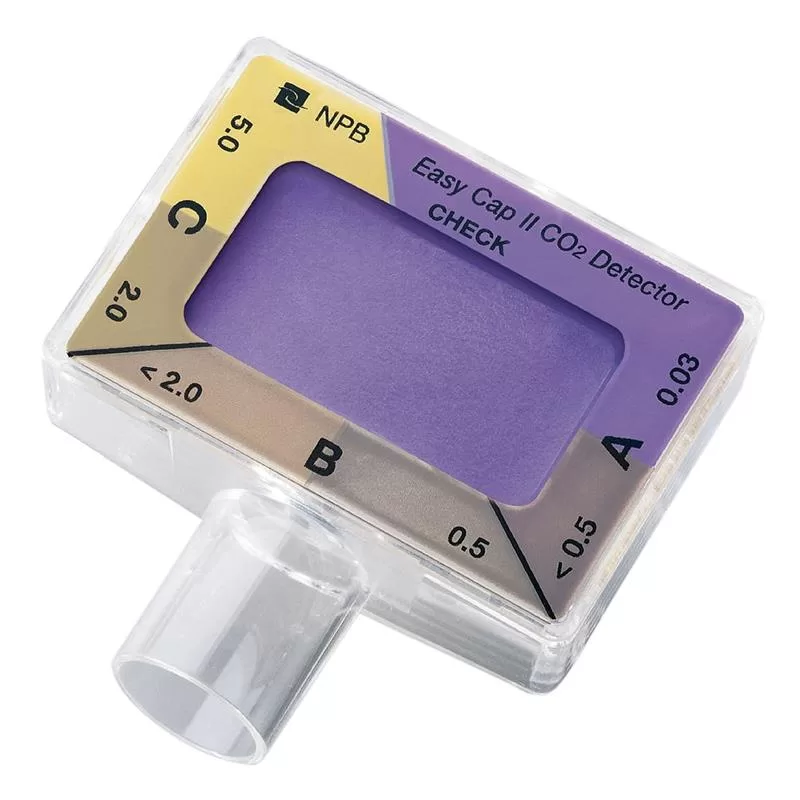
Colorimetric CO2 meters use a color-changing chemical reaction to estimate the CO2 concentration in the air.
They typically contain a sensor tube or badge containing a reactive substance. When exposed to air, the reactive substance reacts with CO2 and changes color, indicating the CO2 level. Colorimetric meters are relatively inexpensive and provide a simple and visual indication of CO2 levels.
However, they are less precise than NDIR or PAS meters and are often used for spot-checking rather than continuous monitoring.
Methods of Increasing CO2 Levels in your grow room
When using any method to increase CO2 levels in your grow room, monitoring CO2 concentrations regularly using a reliable CO2 meter is crucial.
Maintaining optimal CO2 levels in your grow room within the recommended range (1000-1500 ppm) is important for achieving the desired growth benefits without exceeding levels that could harm the plants.
Proper ventilation and airflow management should also be maintained to prevent excessive humidity and ensure adequate oxygen exchange.
Here are a few commonly employed techniques to increase CO2 levels in your cannabis grow room:
Compressed CO2 Tanks
Using compressed CO2 tanks is a popular method for supplementing CO2 in a grow room. These tanks contain pure CO2 gas, which can be released into the environment using a regulator and diffuser.
The CO2 is typically distributed around the plants, ensuring they receive an elevated CO2 concentration.
CO2 Generators
CO2 generators burn a fuel source, such as natural gas or propane, to produce CO2 as a byproduct. These generators have a burner and a sensor to maintain the desired CO2 level.
They release the CO2 into the grow room, enriching the atmosphere. Ensuring proper ventilation and safety precautions when using CO2 generators is essential due to the combustion process.
CO2 Bags
CO2 bags, also known as CO2 emitters or CO2 buckets, contain a mixture of organic substances that produce CO2 through natural processes.
These bags are hung in the grow room, and the CO2 is released gradually over time. CO2 bags offer a simple and cost-effective method of supplementing CO2 levels but may not provide precise control over CO2 concentrations.
Exhaled CO2
In smaller-scale grow rooms, some growers introduce exhaled breath, which contains a higher concentration of CO2, into the environment.
This method involves exhaling directly or using fans to distribute the exhaled air around the plants. While this approach can supplement CO2 levels to some extent, it may not provide precise control or consistency.
The benefits of maintaining proper CO2 levels in your grow room
Although CO2 enrichment can provide substantial benefits, it should be implemented alongside other essential factors such as proper lighting, temperature, humidity, and nutrient management.
A well-rounded and controlled growing environment will optimize the potential benefits of maintaining proper CO2 levels and help you achieve the best possible results in your cannabis cultivation.
Maintaining proper CO2 levels in your grow room has several benefits.
Enhanced Photosynthesis: Carbon dioxide is vital in photosynthesis, where plants convert light energy into chemical energy. By maintaining optimal CO2 levels, you can enhance the rate of photosynthesis. This leads to increased carbohydrate production, which fuels plant growth and development.
Increased Growth Rates: Adequate CO2 levels promote faster growth in cannabis plants. With optimal CO2 concentrations, plants can produce more energy and allocate it towards vegetative growth, resulting in larger leaves, thicker stems, and faster overall development. This can lead to larger plants and higher yields.
Improved Plant Health and Resilience: Proper CO2 levels contribute to overall plant health and resilience. With sufficient CO2, plants can efficiently synthesize carbohydrates vital for energy storage and defense mechanisms. This, in turn, improves the plant’s ability to withstand stressors such as pests, diseases, and environmental fluctuations.
Enhanced Flowering and Bud Development: Maintaining optimal CO2 levels becomes even more crucial during the flowering phase. Adequate CO2 concentrations during this stage promote robust bud development, increased resin production, and improved potency. This can directly impact the quality and quantity of the final harvest.
Higher Yields: One of the primary benefits of maintaining proper CO2 levels is the potential for higher yields. With increased photosynthetic efficiency and accelerated growth rates, cannabis plants can produce more biomass, resulting in larger harvests. This is especially significant for commercial growers who aim to maximize productivity and profitability.
Common mistakes in managing CO2 levels in grow rooms
Not monitoring the levels frequently enough is a common mistake when managing CO2 levels in grow rooms. As mentioned earlier, CO2 levels can vary depending on the height in the grow room and throughout the day.
Not properly ventilating the grow room can lead to a buildup of CO2 and other harmful gases.
Tips for maintaining optimal CO2 levels in your grow room
Monitor CO2 Levels: Regularly measure CO2 levels in your grow room using a reliable CO2 meter. This will help you determine the existing CO2 concentration in your grow room and adjust accordingly.
Set the Right Target Range: Aim for a target CO2 range of 1000 to 1500 parts per million (ppm) during the daylight or “lights on” period. Adjust the target range based on the specific needs of your plants and their growth stage.
CO2 Enrichment Methods: Utilize one of the CO2 enrichment methods mentioned earlier, such as compressed CO2 tanks, CO2 generators, or CO2 bags, to supplement CO2 levels. Choose the method that suits your setup, budget, and preferences.
Optimize Ventilation: Proper ventilation is essential to ensure an adequate exchange of fresh air and the removal of excess heat and humidity. Set up an exhaust system with fans to maintain consistent airflow and prevent the buildup of stagnant air.
Control Room Sealing: Properly seal your grow room to prevent CO2 from escaping and to maintain a controlled environment. Insulate the room and seal any gaps or leaks, allowing air exchange with the outside environment.
Timing CO2 Release: During the “lights on” period, release CO2 in your grow room to coincide with peak photosynthetic activity. This will ensure that plants have an ample supply of CO2 when they are actively engaged in photosynthesis.
Maintain Temperature and Humidity: Optimal temperature and humidity levels are crucial for maximizing CO2 uptake and plant growth. Aim for a temperature range of 70-85°F (21-29°C) and a relative humidity range of 40-60% for optimal results.
Consider Light Intensity: Higher light intensity increases the demand for CO2. Ensure that your lighting setup is appropriate for the CO2 levels you’re providing. High-intensity lighting, such as LEDs or high-pressure sodium (HPS) lamps, may require higher CO2 concentrations.
Ensure Proper Plant Density: Avoid overcrowding your grow room, as it can limit CO2 distribution and hinder airflow. Maintain appropriate spacing between plants to allow for adequate air circulation and CO2 absorption.
Regular Maintenance and Calibration: Regularly maintain and calibrate your CO2 meter and other equipment to ensure accurate readings and reliable operation. This will help you make informed adjustments and maintain optimal CO2 levels consistently.
CO2 supplementation options and equipment
When selecting CO2 supplementation equipment, consider factors such as the size of your grow room, budget, level of automation desired, and safety considerations.
It’s important to choose reliable and well-regulated equipment and follow the manufacturer’s instructions for installation, operation, and maintenance.
Additionally, regular monitoring of CO2 levels using a CO2 meter is essential to ensure proper supplementation and avoid potential issues.
Here are some common CO2 supplementation methods and the corresponding equipment:
Colorimetric CO2 Meters
Compressed CO2 tanks or cylinders are a popular choice for CO2 supplementation. These tanks store pure CO2 gas under pressure.
To use them, you’ll need a regulator to control the flow of CO2 from the tank and a diffuser or emitter to distribute the CO2 evenly throughout the grow room. Regulators often come with pressure gauges and flow rate control knobs for precise adjustment.
CO2 Generators
CO2 generators are devices that produce CO2 gas by burning a fuel source, typically natural gas or propane.
They consist of a burner, a pilot light or ignition system, and a sensor to maintain the desired CO2 level. CO2 generators release the produced CO2 gas directly into the grow room. It’s important to ensure proper ventilation and safety precautions when using CO2 generators due to combustion.
CO2 Bags or Emitters
CO2 bags, also known as CO2 emitters or CO2 buckets, are passive CO2 supplementation options. These bags contain a mixture of organic materials that naturally produce CO2 as they decompose.
CO2 bags are hung in the grow room, and the CO2 is gradually released into the environment. They provide a simple and cost-effective method of CO2 supplementation but may not offer precise control over CO2 levels.
CO2 Controllers
CO2 controllers are devices that monitor and regulate CO2 levels in your grow room. They consist of a CO2 sensor, a controller unit, and a relay or solenoid valve.
The CO2 sensor measures the CO2 concentration, and the controller adjusts the CO2 supplementation equipment (such as a tank or generator) based on the set target range. CO2 controllers offer automation and can help maintain consistent CO2 levels.
Automated CO2 Systems
Automated CO2 systems integrate CO2 supplementation equipment, sensors, and controllers into a comprehensive setup.
These systems often include features such as timers, data logging, and programmable settings. They provide advanced control over CO2 levels, allowing you to fine-tune supplementation based on the specific needs of your plants.
Conclusion: The importance of monitoring and managing CO2 levels in your grow room for thriving cannabis plants
CO2 levels play a crucial role in the growth and development of cannabis plants. Maintaining optimal CO2 levels in your grow room will promote healthy and vigorous growth, increase resistance to pests and diseases, and improve your harvest’s overall quality and yield.
If you’re looking to improve the health and growth of your cannabis plants, consider monitoring and managing the CO2 levels in your grow room.
Doing so ensures that your plants receive the optimal amount of CO2 for maximum growth and yield.
